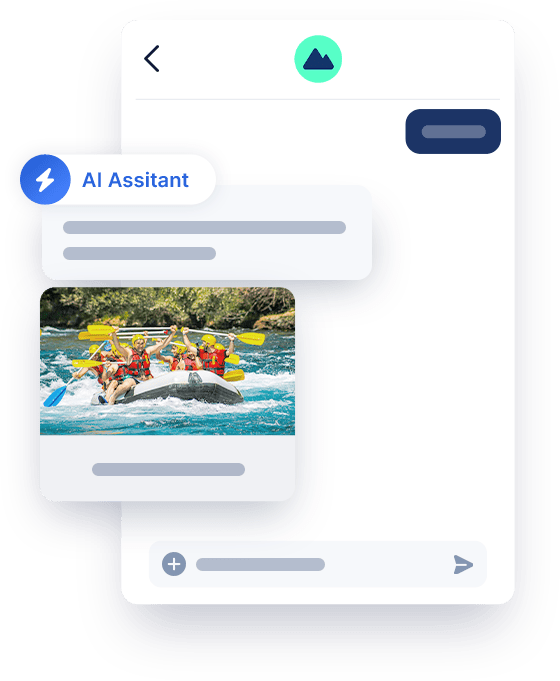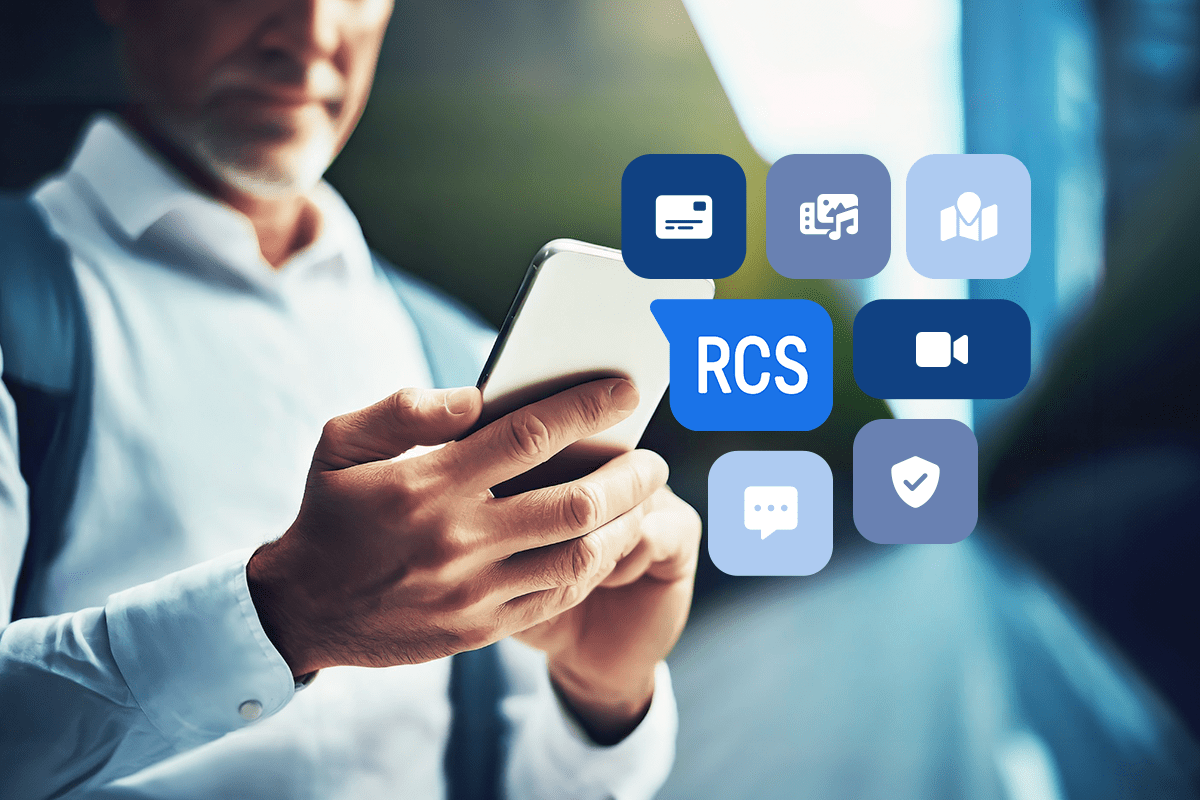9 Reasons Why Customers Want to Text You

People love their phones. The average American will spend nearly a month and a half (44 days) on their phones in 2022, according to a survey from Reviews.org. And they check their phones a staggering 344 times per day—up 31% from 2021.
But making a phone call? That they don’t love.
So if people aren’t making calls, what are they using their phones for? They’re checking social media apps, consuming news, replying to emails, and texting. People prefer SMS text to connect with family and friends—even businesses.
In fact, Juniper Research reported that global mobile business messaging traffic hit 2.7 trillion in 2020, up 10% from 2019. And customer service requests over SMS jumped 28% in 2021, according to Zendesk’s CX Trends Report.
Customers know what they want, but businesses are slow to respond. Nearly 93% of consumers want to communicate via text message, says Forbes, yet less than a third of consumers report getting text messages from them.
People want to send text messages. So why do so few companies offer it?
Business messaging includes SMS/texting, but it isn’t limited to it. There are many text apps like WhatsApp and Facebook Messenger, as well as messaging support through Google Business Messages and Apple Messages for Business.
What does this mean for your customer service team? It’s time to embrace business text messaging. Your customers want to text you, and here are 9 reasons why.
1. Customers want options.
Too many choices may lead to feeling overwhelmed, but that doesn’t stop customers from wanting them. There are countless ways to reach out to businesses. Customers have tasted the power to choose, and they want more.
People pick the method of communication that fits their problem. According to Zendesk’s 2020 CX Trends report, 40% of customers choose a channel based on the complexity of their issue. Simple questions may only merit a text, while explaining more complex issues over a phone call is probably easier.
It’s important to remember that you’re not replacing your call centers. You’re merely providing another option.
2. Your customers are busy.
Multitasking has become an art form with your customers juggling hundreds of tasks daily. They’ve been taught to maximize their productivity and not let one second of downtime go to waste. They even spend their free time (which they value more than ever) bettering themselves with restorative activities.
So it’s a big deal when they have to drop what they’re doing to call customer service—let alone wait on hold. Calling a support center when all they need is a quick answer breaks up the flow of their day.
Meanwhile, email support still feels like a more formal medium. People spend longer drafting messages, which wastes more of their day. Plus, they don’t know how quickly (or how long) it’ll take to receive a reply.
Customers want businesses to value their time.
Sending a text message fits your customers’ lifestyles and won’t disrupt their hectic days.
3. Your customers don’t want to wait.
They’re too busy optimizing their day for maximum productivity to wait on hold for customer service. According to a survey conducted by Arise, nearly two-thirds of customers say they’re only willing to wait 2 minutes or less before hanging up.
An aside: Though not the topic of the survey, 15% of Arise survey respondents said they do not contact customer service by phone. This implies that these customers never use the phone to connect with brands.
Customers also don’t want to wait for a response over email. That’s why texting is the goldilocks of the customer service world. It falls somewhere between instant in-person answers and delayed email responses.
Efficiency is critical for your customers as much as it is for you. Being able to ask a question, get a quick response, and move about their day will make them more productive and give them the confidence to do business with you again.
4. They just need a quick answer.
Simple questions don’t need a phone call. Getting answers to common queries like, “When will this be back in stock?” or “Where’s my order?” shouldn’t require a phone call and a potentially long wait on hold.
You likely have this information on your website, but you want to make it as simple as possible for customers to get answers. Sending a text is the simplest way for people to get answers—and it’s even faster when you use AI chatbots to tackle them.
Then customers get service without tying up your customer support agents on phone calls or even text responses.
5. Texting isn’t limited to millennials.
If you serve any generation other than millennials and Gen Z, you might think texting doesn’t apply. But it does—messaging isn’t just a young kids’ game.
It’s true that the younger the generation, the more likely they are to send a text message over making a call. But text messaging is still used by baby boomers and older generations.
AARP reported in 2018 that 9 in 10 adults over 50 use their smartphones to send instant messages, texts, or emails—and it’s likely that number has gone up dramatically since.
Because almost everyone uses text messaging to communicate with someone, it’s also a less technical way for people of any age to reach customer service.
Other messaging channels may require downloading an app or using unfamiliar social media. Text messaging, however, is ready to go on everyone’s device.
6. They can text on their terms.
What if your customers have a question outside of business hours? Waiting until 9–5, Mondays through Fridays, crushes their need for instant gratification. More than that, problems rarely occur on a set schedule.
Not only is sending a text faster than connecting over email and phone, but it’s also asynchronous. In short, that means both parties don’t need to be present for the conversation to continue. Your customer can send a message and then go about their day while waiting for a response. They control the cadence of the conversation.
This also benefits your customer service team. Instead of spending all their time on one call, agents can manage up to 8 conversations in the time it would take for one call.
7. They just prefer texting.
We’re all guilty of hitting ignore on a well-intentioned phone call or putting off making an appointment. More and more, people perceive a phone call as invasive and time-consuming.
According to a Bank My Cell survey, 75% of millennials avoid phone calls as they’re time-consuming. And 81% get apprehension anxiety before summoning up the courage to make a call. While millennials have a reputation for being phone-averse, it doesn’t stop with them.
Why do so many of us dread phone calls?
Among many reasons, it’s because they’re unpredictable. A customer service call can take a few minutes or half an hour, so customers don’t know how to prepare.
Business texts are quick and efficient, but they’re also just really convenient.
8. Customers want a better experience.
Your customer service team’s goal is to give your patrons the experience they want. Adding business messaging as a customer support channel and also a tool in your text message marketing arsenal—a relatively moderate lift on your end—will exponentially improve the experience for many of your customers.
In fact, customer satisfaction scores over messaging are 8–14 percentage points higher than other channels.
And the value of a great customer experience is higher than you might think. Customers are even willing to pay for it. PwC reports that 73% of people say customer experience is an important factor in their purchasing decisions.
From sending support messages to answering questions and even making purchases, you can create a complete customer experience right within a native texting app.
Plus, you’re likely to improve customer perception and help boost revenue as a result.
9. Customers want more than words.
When you think about business text messages, sending GIFs, emojis, and product videos may not be the first thing that comes to mind.
But it should be, especially if you’re doing SMS marketing, because “rich messaging” (as it’s been named) can seriously boost engagement with your messages. Think about it: How many times do you race to open an incoming message with a GIF or video link, vs. a standard text message?
Rich messaging can mean the difference between customers feeling like they’re texting a business, and feeling like they’re messaging a family member or friend.
By enabling additional media via SMS/text, you can help customers complete a whole slew of actions, including:
- Completing transactions
- Scheduling appointments
- Browsing and selecting products
Your customers want to text you.
What are you waiting for? Companies that have enthusiastically embraced messaging have taken the customer experience to a whole new level.
Texting a customer and accepting incoming messages is one of the best ways to connect with them.
Whether you’re looking to strengthen your customer service game, or simply provide another avenue for customers to share feedback, messaging is the way forward.




